 Search by Keyword
|
“SHE SAID SHE SAID”
(John Lennon – Paul McCartney)
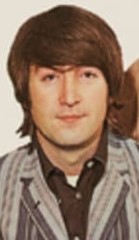 Sometimes, out of adversity comes genius. John Lennon’s song “She Said She Said” is a very good example of this. The initial inspiration for the song came from an irritating experience, sorting out the fragmentary ideas into a cohesive whole was a laborious and exhausting process, a last minute need pushed for the song to hurriedly be recorded, and an angry exchange of words led to the departure of an important group member to leave during the recording process. Sometimes, out of adversity comes genius. John Lennon’s song “She Said She Said” is a very good example of this. The initial inspiration for the song came from an irritating experience, sorting out the fragmentary ideas into a cohesive whole was a laborious and exhausting process, a last minute need pushed for the song to hurriedly be recorded, and an angry exchange of words led to the departure of an important group member to leave during the recording process.
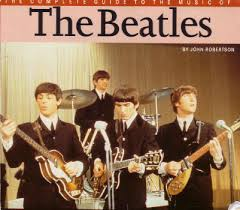 This all sounds like it’s describing a project that was due for failure. This however was not the case at all. Authors unanimously praise the song, describing it as having “commanding emotional weight,” “The Beatles at their acid rock peak,” “the outstanding track on ‘Revolver,’” and, in John Robertson's book "The Complete Guide To The Music Of The Beatles," "a brilliant three-minute pop song." In fact, it’s very hard to find a negative word written about this piece of work. It may not have been a hit, and it never got much airplay, but once this hidden gem is found, it appears to be respected and cherished as a favorite. This all sounds like it’s describing a project that was due for failure. This however was not the case at all. Authors unanimously praise the song, describing it as having “commanding emotional weight,” “The Beatles at their acid rock peak,” “the outstanding track on ‘Revolver,’” and, in John Robertson's book "The Complete Guide To The Music Of The Beatles," "a brilliant three-minute pop song." In fact, it’s very hard to find a negative word written about this piece of work. It may not have been a hit, and it never got much airplay, but once this hidden gem is found, it appears to be respected and cherished as a favorite.
 The Beatles in the backyard by the pool at 7655 Curson Terrace, Benedict Canyon, August 1965
|
Songwriting History
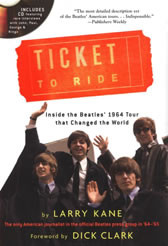 Midway through their 1965 American tour, The Beatles took some needed time off to relax. However, being who they were, they couldn’t just stay anywhere. “The strategy for safety was one of a tight security net surrounded by seclusion,” relates Larry Kane in his 2003 book “Ticket To Ride,” continuing, “They were staying at a ranch-style house in Benedict Canyon, an exclusive neighborhood featuring narrow drives and homes set on hilltops. It would take an army ranger to scale the cliffs and penetrate Fortress Beatles.” The address was 7655 Curson Terrace, a luxurious rented home owned by actress Zsa Zsa Gabor that John Lennon described as “something out of Disneyland.” George Harrison remembers: “It was a horseshoe-shaped house on a hill off Mulholland. It had a little gatehouse, which Mal (Evans) and Neil (Aspinall) stayed in, decorated by Arabian-type things draped on the walls” Midway through their 1965 American tour, The Beatles took some needed time off to relax. However, being who they were, they couldn’t just stay anywhere. “The strategy for safety was one of a tight security net surrounded by seclusion,” relates Larry Kane in his 2003 book “Ticket To Ride,” continuing, “They were staying at a ranch-style house in Benedict Canyon, an exclusive neighborhood featuring narrow drives and homes set on hilltops. It would take an army ranger to scale the cliffs and penetrate Fortress Beatles.” The address was 7655 Curson Terrace, a luxurious rented home owned by actress Zsa Zsa Gabor that John Lennon described as “something out of Disneyland.” George Harrison remembers: “It was a horseshoe-shaped house on a hill off Mulholland. It had a little gatehouse, which Mal (Evans) and Neil (Aspinall) stayed in, decorated by Arabian-type things draped on the walls”
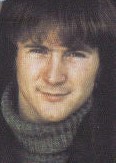 The band stayed there from August 23rd to 28th, 1965, and relaxed by the pool with invited guests, such as Joan Baez and Jim (later Roger) McGuinn and David Crosby from The Byrds. Since The Byrds had attracted quite a following playing at Ciro's on the Sunset Strip early on in their career, Hollywood actors and filmmakers became intimate friends with the band. This friendship led to actor Peter Fonda being invited as their guest to socialize with The Beatles during this five day tour break. "I finally made my way past the kids and the guards," Fonda told Rolling Stone magazine about this August 24th, 1965 visit. "Paul and George were on the back patio, and the helicopters were patrolling overhead. They were sitting at a table under an umbrella in a rather comical attempt at privacy. Soon afterwards we dropped acid and began tripping for what would prove to be all night and most of the next day." The band stayed there from August 23rd to 28th, 1965, and relaxed by the pool with invited guests, such as Joan Baez and Jim (later Roger) McGuinn and David Crosby from The Byrds. Since The Byrds had attracted quite a following playing at Ciro's on the Sunset Strip early on in their career, Hollywood actors and filmmakers became intimate friends with the band. This friendship led to actor Peter Fonda being invited as their guest to socialize with The Beatles during this five day tour break. "I finally made my way past the kids and the guards," Fonda told Rolling Stone magazine about this August 24th, 1965 visit. "Paul and George were on the back patio, and the helicopters were patrolling overhead. They were sitting at a table under an umbrella in a rather comical attempt at privacy. Soon afterwards we dropped acid and began tripping for what would prove to be all night and most of the next day."
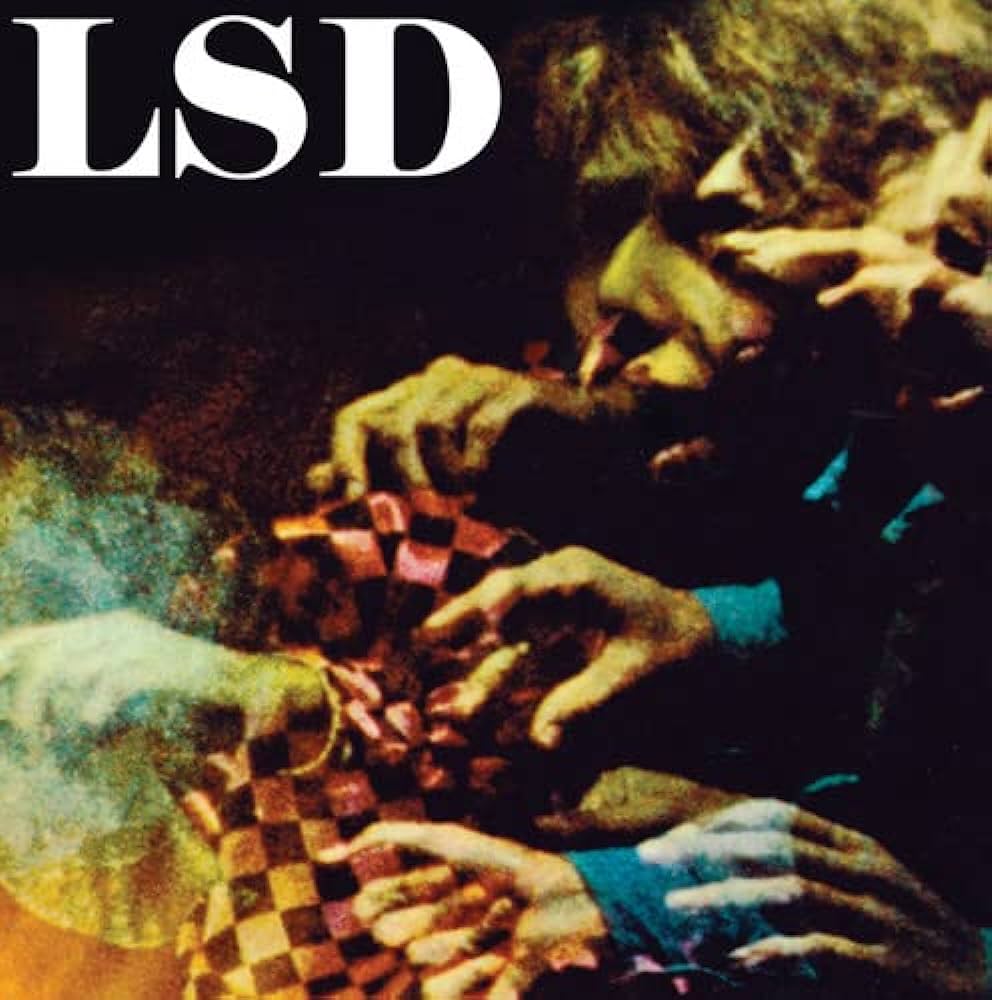 Harrison explains: “John and I had decided that Paul and Ringo had to have acid, because we couldn’t relate to them anymore…The plan was that when we got to Hollywood, on our day off we were going to get them to take acid. We got some in New York; it was on sugar cubes wrapped in tinfoil and we’d been carrying these around all through the tour until we got to L.A.” This was the second time John and George experienced the drug, having had it put in their coffee without their knowledge during a dinner party with a dentist earlier that year. For what it's worth, acid was not considered illegal at the time. Harrison explains: “John and I had decided that Paul and Ringo had to have acid, because we couldn’t relate to them anymore…The plan was that when we got to Hollywood, on our day off we were going to get them to take acid. We got some in New York; it was on sugar cubes wrapped in tinfoil and we’d been carrying these around all through the tour until we got to L.A.” This was the second time John and George experienced the drug, having had it put in their coffee without their knowledge during a dinner party with a dentist earlier that year. For what it's worth, acid was not considered illegal at the time.
 Wanting their other bandmates to have the same drug experience wasn’t a complete success. Lennon explains: "We just decided to take it again, in California. We were in one of those houses like Doris Day’s house, and the three of us took it, Ringo, George and I – and maybe Neil (Aspinall). Paul felt very out of it, because we are all slightly cruel, (saying): ‘We’re all taking it and you’re not.’ It was a long time before Paul took it." Wanting their other bandmates to have the same drug experience wasn’t a complete success. Lennon explains: "We just decided to take it again, in California. We were in one of those houses like Doris Day’s house, and the three of us took it, Ringo, George and I – and maybe Neil (Aspinall). Paul felt very out of it, because we are all slightly cruel, (saying): ‘We’re all taking it and you’re not.’ It was a long time before Paul took it."
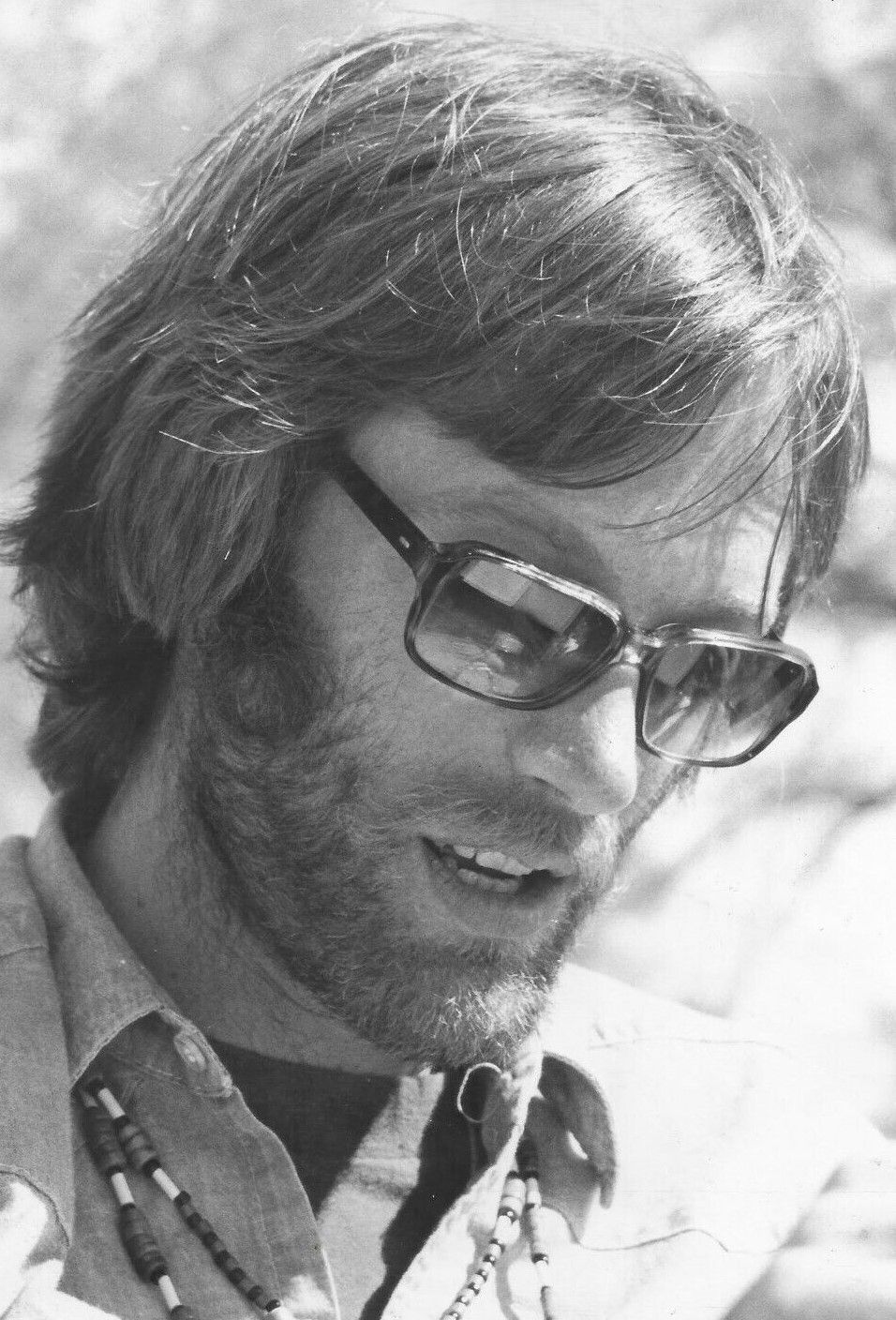 Regarding “She Said She Said,” John remembers: “That was written after an acid trip in L.A. during a break in The Beatles tour where we were having fun with The Byrds and lots of girls. Peter Fonda came in when we were on acid and he kept coming up to me and sitting next to me and whispering, ‘I know what it’s like to be dead.’ He was describing an acid trip he’d been on. We didn’t want to hear about that! We were on an acid trip, and the sun was shining, and the girls were dancing (some from Playboy, I believe) and the whole thing was really beautiful and Sixties. And this guy, who I didn’t really know - he hadn’t made ‘Easy Rider’ (yet) or anything, kept coming over, wearing shades, saying, ‘I know what it’s like to be dead,’ and we kept leaving him, because he was so boring. It was scary, when you’re flying high: ‘Don’t tell me about it. I don’t want to know what it’s like to be dead!’” George recalls: “I don’t know how, but Peter Fonda was there. He kept saying, ‘I know what it’s like to be dead, because I shot myself.’ He’d accidentally shot himself at some time and he was showing us his bullet wound. He was very uncool.” Regarding “She Said She Said,” John remembers: “That was written after an acid trip in L.A. during a break in The Beatles tour where we were having fun with The Byrds and lots of girls. Peter Fonda came in when we were on acid and he kept coming up to me and sitting next to me and whispering, ‘I know what it’s like to be dead.’ He was describing an acid trip he’d been on. We didn’t want to hear about that! We were on an acid trip, and the sun was shining, and the girls were dancing (some from Playboy, I believe) and the whole thing was really beautiful and Sixties. And this guy, who I didn’t really know - he hadn’t made ‘Easy Rider’ (yet) or anything, kept coming over, wearing shades, saying, ‘I know what it’s like to be dead,’ and we kept leaving him, because he was so boring. It was scary, when you’re flying high: ‘Don’t tell me about it. I don’t want to know what it’s like to be dead!’” George recalls: “I don’t know how, but Peter Fonda was there. He kept saying, ‘I know what it’s like to be dead, because I shot myself.’ He’d accidentally shot himself at some time and he was showing us his bullet wound. He was very uncool.”
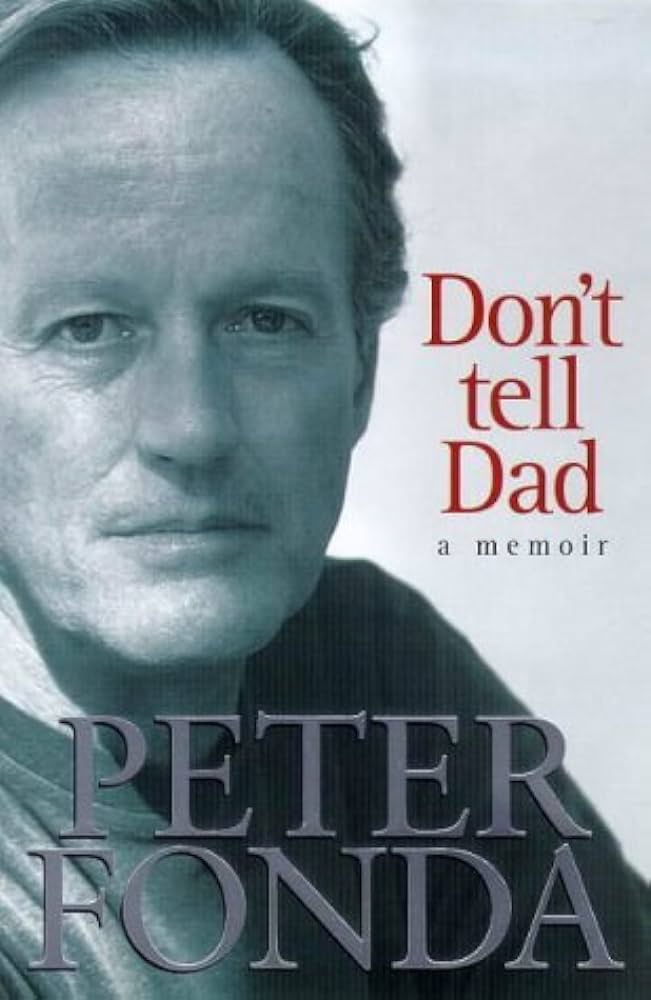 Peter Fonda gives a more detailed interpretation of this incident in his book "Don't Tell Dad": “David Crosby came and got me, I don't know why it was me, and said, 'George is in trouble...' So I had to go over there and say, 'Don't worry about it, George, this is what this drug does...It unlocks the doors of perception.'...I remember sitting out on the deck of the house with George, who was telling me that he thought he was dying. I told him that there was nothing to be afraid of and that all he needed to do was to relax. I said that I knew what it was like to be dead because when I was 10 years old I’d accidentally shot myself in the stomach and my heart stopped beating three times while I was on the operating table because I’d lost so much blood. John was passing at the time and heard me saying ‘I know what it’s like to be dead.’ He looked at me and said, ‘you’re making me feel I’ve never been born – Who put all that sh#t in your head?’…When I heard ‘Revolver’ for the first time I knew exactly where the song had come from, although John never acknowledged it to me and I never mentioned it to anyone” Peter Fonda gives a more detailed interpretation of this incident in his book "Don't Tell Dad": “David Crosby came and got me, I don't know why it was me, and said, 'George is in trouble...' So I had to go over there and say, 'Don't worry about it, George, this is what this drug does...It unlocks the doors of perception.'...I remember sitting out on the deck of the house with George, who was telling me that he thought he was dying. I told him that there was nothing to be afraid of and that all he needed to do was to relax. I said that I knew what it was like to be dead because when I was 10 years old I’d accidentally shot myself in the stomach and my heart stopped beating three times while I was on the operating table because I’d lost so much blood. John was passing at the time and heard me saying ‘I know what it’s like to be dead.’ He looked at me and said, ‘you’re making me feel I’ve never been born – Who put all that sh#t in your head?’…When I heard ‘Revolver’ for the first time I knew exactly where the song had come from, although John never acknowledged it to me and I never mentioned it to anyone”
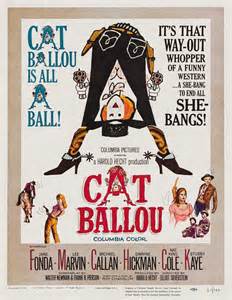 Another attendee at the time, Jim (Roger) McGuinn, adds a little more detail: “We were all on acid and John couldn’t take it. John said, ‘Get this guy out of here.’ It was morbid and bizarre. We’d just finished watching (the movie) ‘Cat Ballou’ with Jane Fonda in it and John didn’t want anything to do with any of the Fondas. He was holding the movie against Peter and then what he said just added to it.” Another attendee at the time, Jim (Roger) McGuinn, adds a little more detail: “We were all on acid and John couldn’t take it. John said, ‘Get this guy out of here.’ It was morbid and bizarre. We’d just finished watching (the movie) ‘Cat Ballou’ with Jane Fonda in it and John didn’t want anything to do with any of the Fondas. He was holding the movie against Peter and then what he said just added to it.”
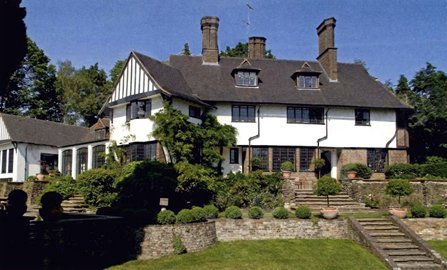 This event was remembered by John and he later taped himself developing this idea on acoustic guitar in the music room of his Kenwood home in Surrey, the lyrical results being: “He said, I know what it’s like to be dead, I said…I said, I must be out of my head, he said…” Knowing that this song had a long way to go, he put it aside for awhile until inspiration hit him. “When I wrote that, I had the ‘she said, she said’ bit, but it was just meaning nothing. It was vaguely to do with someone who had said something…and then it was just a sound…but I changed it to ‘she’ instead of ‘he.’” The next home demo he made at his Kenwood home added lines such as “I said,’who put all that crap in your head’…and it’s making me feel like my trousers are torn…she said, ‘I will love you more when you’re dead,’ I said, ‘no, no, no, it’s wrong.’” This event was remembered by John and he later taped himself developing this idea on acoustic guitar in the music room of his Kenwood home in Surrey, the lyrical results being: “He said, I know what it’s like to be dead, I said…I said, I must be out of my head, he said…” Knowing that this song had a long way to go, he put it aside for awhile until inspiration hit him. “When I wrote that, I had the ‘she said, she said’ bit, but it was just meaning nothing. It was vaguely to do with someone who had said something…and then it was just a sound…but I changed it to ‘she’ instead of ‘he.’” The next home demo he made at his Kenwood home added lines such as “I said,’who put all that crap in your head’…and it’s making me feel like my trousers are torn…she said, ‘I will love you more when you’re dead,’ I said, ‘no, no, no, it’s wrong.’”
 John continues: "And then, I wanted a middle-eight. The beginning had been around for days and days and so I wrote the first thing that came into my head, and it was ‘When I was a boy,’ in a different beat, but it was real because it just happened…It was a sad song. It was just an ‘acidy’ song, I suppose. ‘When I was a little boy,’ you see. A lot of early childhood was coming out, anyway…That was pure." Interestingly, Lennon's early handwritten lyrics included the above mentioned "crap in your head" and "trousers are torn" lines, suggesting that he really wanted to include those lyrics in a Beatles song. We can only imagine how that would have gone over in 1966! John continues: "And then, I wanted a middle-eight. The beginning had been around for days and days and so I wrote the first thing that came into my head, and it was ‘When I was a boy,’ in a different beat, but it was real because it just happened…It was a sad song. It was just an ‘acidy’ song, I suppose. ‘When I was a little boy,’ you see. A lot of early childhood was coming out, anyway…That was pure." Interestingly, Lennon's early handwritten lyrics included the above mentioned "crap in your head" and "trousers are torn" lines, suggesting that he really wanted to include those lyrics in a Beatles song. We can only imagine how that would have gone over in 1966!
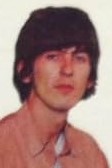 George Harrison remembered how the framework of the song came together: “I did actually do some writing with him later on. I was at his house one day – this is the mid '60s – and he was struggling with some tunes. He had loads of bits, maybe three songs, that were unfinished, and I made suggestions and helped him to work them together so that they became one finished song, ‘She Said She Said.’ The middle part of that record is a different song: ‘She said, I know what it’s like to be dead, and I said, oh, no, no you’re wrong…’ Then it goes into the other one, ‘When I was a boy…’ That was a real weld. So I did things like that.” George Harrison remembered how the framework of the song came together: “I did actually do some writing with him later on. I was at his house one day – this is the mid '60s – and he was struggling with some tunes. He had loads of bits, maybe three songs, that were unfinished, and I made suggestions and helped him to work them together so that they became one finished song, ‘She Said She Said.’ The middle part of that record is a different song: ‘She said, I know what it’s like to be dead, and I said, oh, no, no you’re wrong…’ Then it goes into the other one, ‘When I was a boy…’ That was a real weld. So I did things like that.”
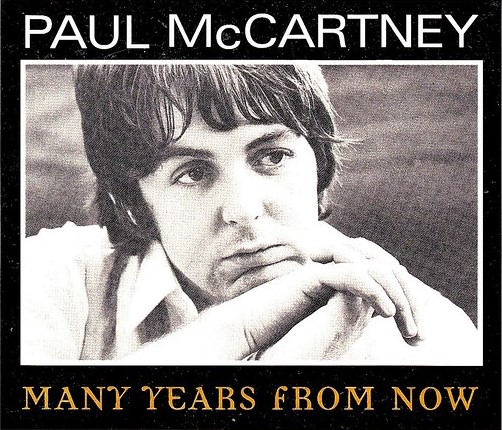 Since Paul’s name was on the writers credit (as it always was), the question remains as to whether he helped out at all. “Very much John,” Paul writes in the book “Many Years From Now.” He continues: “It’s a nice one. I like the title 'She Said She Said.' John brought it in pretty much finished, I think.” Since Paul’s name was on the writers credit (as it always was), the question remains as to whether he helped out at all. “Very much John,” Paul writes in the book “Many Years From Now.” He continues: “It’s a nice one. I like the title 'She Said She Said.' John brought it in pretty much finished, I think.”
Recording History
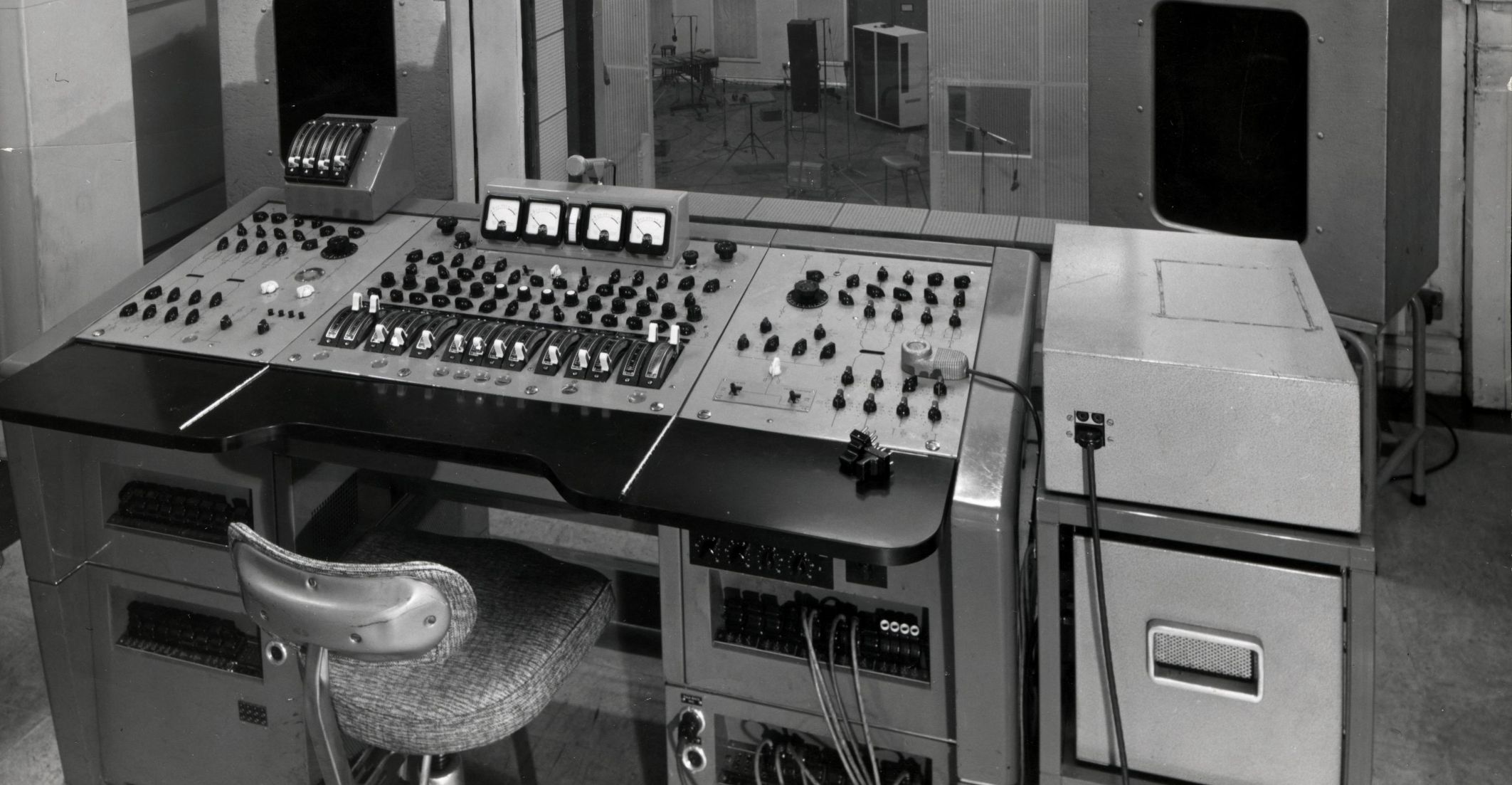 As stated above, the first recordings made of the song were done personally by John in the music room of his Kenwood home. Then, after a full two-and-a-half months of intensive work recording their latest album, creating their most groundbreaking and innovative recordings to date, it was time to complete both the mono and stereo mixes to ready the album for release. June 21st, 1966 was designated as the day to get this work done, George Martin and engineers Geoff Emerick and Phil McDonald filing into the control room of EMI Studio Three at 10 am for the task at hand. The Beatles themselves were interested enough in their work to attend this mixing session as well, offering their the occasional input as to what sounded best to them. As stated above, the first recordings made of the song were done personally by John in the music room of his Kenwood home. Then, after a full two-and-a-half months of intensive work recording their latest album, creating their most groundbreaking and innovative recordings to date, it was time to complete both the mono and stereo mixes to ready the album for release. June 21st, 1966 was designated as the day to get this work done, George Martin and engineers Geoff Emerick and Phil McDonald filing into the control room of EMI Studio Three at 10 am for the task at hand. The Beatles themselves were interested enough in their work to attend this mixing session as well, offering their the occasional input as to what sounded best to them.
 Geoff Emerick, in his 2006 book “Here, There And Everywhere,” relates how a noteworthy issue came up on this day. "It wasn’t until the very end, when most of ‘Revolver’ was mixed and ready to be mastered, that someone realized that the album was a song short…if they were too short, there would be complaints, or worse yet, returns, from consumers. Not only was there a release date set, and a hungry public clamoring to hear the finished album, but The Beatles were booked to begin a European tour just days after the sessions ended, so there was no time to spare." Three nights of concerts in West Germany were due to begin three days later, on June 24th, 1966, so they needed to have this album complete before they left, this being the last day available. Geoff Emerick, in his 2006 book “Here, There And Everywhere,” relates how a noteworthy issue came up on this day. "It wasn’t until the very end, when most of ‘Revolver’ was mixed and ready to be mastered, that someone realized that the album was a song short…if they were too short, there would be complaints, or worse yet, returns, from consumers. Not only was there a release date set, and a hungry public clamoring to hear the finished album, but The Beatles were booked to begin a European tour just days after the sessions ended, so there was no time to spare." Three nights of concerts in West Germany were due to begin three days later, on June 24th, 1966, so they needed to have this album complete before they left, this being the last day available.
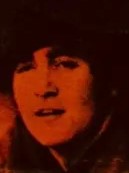 At this point, it was John who came to the rescue with “She Said She Said,” a song which hadn’t been fully worked out yet but he figured, with them due to be in Munich two days later, they had no choice but to piece it together in the studio. He hadn’t even decided on a title for the song, it being referred to as “Untitled” at the beginning of that day. At this point, it was John who came to the rescue with “She Said She Said,” a song which hadn’t been fully worked out yet but he figured, with them due to be in Munich two days later, they had no choice but to piece it together in the studio. He hadn’t even decided on a title for the song, it being referred to as “Untitled” at the beginning of that day.
 Geoff Emerick continues: “So on the next-to-last night, after we had all spent a full day mixing, Mal (Evans) and Neil (Aspinall) reappeared with the band’s equipment and the group began frantically rehearsing John’s new song ‘She Said She Said.’ John had always been the basher in the group – his attitude was ‘Let’s just get it done’ – so it was no big surprise that we got the entire song recorded and mixed in nine hours, as opposed to the more than three days we spent on ‘Here, There And Everywhere.’ Still, he made the group run through the song dozens of times before he was satisfied with the final result. For all of that…it’s got the ragged feel of a track that was done in the middle of the night, under pressure.” Mark Lewisohn, in his book “The Beatles Recording Sessions,” relates that the group spent “most of the time rehearsing through at least 25 takes.” This recording session began at 7 pm that evening. Geoff Emerick continues: “So on the next-to-last night, after we had all spent a full day mixing, Mal (Evans) and Neil (Aspinall) reappeared with the band’s equipment and the group began frantically rehearsing John’s new song ‘She Said She Said.’ John had always been the basher in the group – his attitude was ‘Let’s just get it done’ – so it was no big surprise that we got the entire song recorded and mixed in nine hours, as opposed to the more than three days we spent on ‘Here, There And Everywhere.’ Still, he made the group run through the song dozens of times before he was satisfied with the final result. For all of that…it’s got the ragged feel of a track that was done in the middle of the night, under pressure.” Mark Lewisohn, in his book “The Beatles Recording Sessions,” relates that the group spent “most of the time rehearsing through at least 25 takes.” This recording session began at 7 pm that evening.
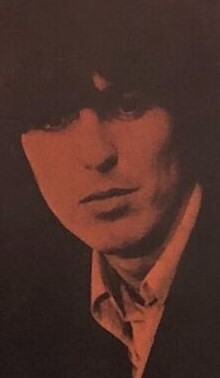 The cavalier attitude of Lennon presumably got the best of McCartney on this day at some point. “I’m not sure, but I think it was one of the only Beatle records I never played on,” McCartney recounts in his 1997 book "Many Years From Now." “I think we’d had a barney or something and I said, ‘Oh, f#ck you!’ and they said, ‘Well, we’ll do it.’ I think George played bass.” This situation had been viewed as confirmed for many decades but, as new revelations were unveiled in the 2022 "Revolver" editions, clarifications have come to light. It should be noted, however, that author Mark Lewisohn, who received the priviledge of hearing the master tapes of the song for his highly revered 1988 book "The Beatles Recording Sessions," stated back then that he heard "drums, bass and two guitars" on the live rhythm track recorded on June 21st, 1966, thus indicating that Paul must have contributed bass on the released recording. In addition, the newer information presented below, as we will see, indicates that McCartney's recollections were innacurate, at least in part. The cavalier attitude of Lennon presumably got the best of McCartney on this day at some point. “I’m not sure, but I think it was one of the only Beatle records I never played on,” McCartney recounts in his 1997 book "Many Years From Now." “I think we’d had a barney or something and I said, ‘Oh, f#ck you!’ and they said, ‘Well, we’ll do it.’ I think George played bass.” This situation had been viewed as confirmed for many decades but, as new revelations were unveiled in the 2022 "Revolver" editions, clarifications have come to light. It should be noted, however, that author Mark Lewisohn, who received the priviledge of hearing the master tapes of the song for his highly revered 1988 book "The Beatles Recording Sessions," stated back then that he heard "drums, bass and two guitars" on the live rhythm track recorded on June 21st, 1966, thus indicating that Paul must have contributed bass on the released recording. In addition, the newer information presented below, as we will see, indicates that McCartney's recollections were innacurate, at least in part.
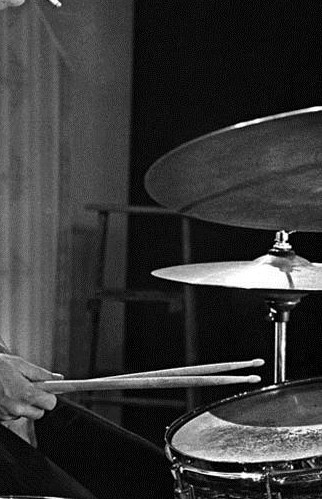 Extensive rehearsals of John's new song were captured on a new four-track tape, Ringo's drums and Paul's bass being allocated to track one and John and George's guitars being placed on track two. The difficult structure of the song was worked out during these rehearsals, "take 15" of these being released on the Deluxe editions of "Revolver." Once the group was feeling a bit more confident, they spooled back the tape to record the song properly, realizing that they needed to get this finished on this day. Three new takes of the song were then recorded at the beginning of the tape, the first two being incomplete versions. Before "take two," the tape reveals banter among the group, Ringo feeling he "came in one (measure) early, and you were saying one more" to which Paul replied, "Actually, I thought you were out there still having lunch." John, realizing the time was getting late on their last day of recording, encourages the others by saying, "C'mon, now. C'mon, C'mon. Last track! Last track! Last track!" Ringo continues to express how he feels he's "coming in too early," to which John replies, "You're doing fine! See, I'll sing the words." All of this dialog was added to the beginning of "take 15" for the above mentioned Deluxe editions of "Revolver." Extensive rehearsals of John's new song were captured on a new four-track tape, Ringo's drums and Paul's bass being allocated to track one and John and George's guitars being placed on track two. The difficult structure of the song was worked out during these rehearsals, "take 15" of these being released on the Deluxe editions of "Revolver." Once the group was feeling a bit more confident, they spooled back the tape to record the song properly, realizing that they needed to get this finished on this day. Three new takes of the song were then recorded at the beginning of the tape, the first two being incomplete versions. Before "take two," the tape reveals banter among the group, Ringo feeling he "came in one (measure) early, and you were saying one more" to which Paul replied, "Actually, I thought you were out there still having lunch." John, realizing the time was getting late on their last day of recording, encourages the others by saying, "C'mon, now. C'mon, C'mon. Last track! Last track! Last track!" Ringo continues to express how he feels he's "coming in too early," to which John replies, "You're doing fine! See, I'll sing the words." All of this dialog was added to the beginning of "take 15" for the above mentioned Deluxe editions of "Revolver."
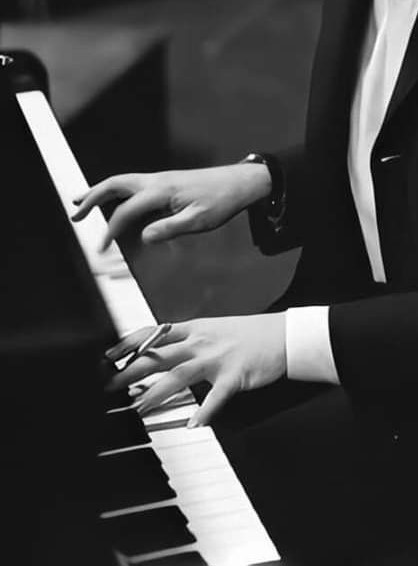 It was at this point that it appears there was an argument between Paul and John about the arrangement of the song. A recording sheet in the Abbey Road archive mentions a piano being added to the song, this possibly being a suggestion of Paul's that was not noted on the tape box nor heard on the session tapes. Since Lennon has been outspoken about his wanting to present his songs in the rock 'n' roll format of guitars / bass / drums, this piano suggestion from Paul may have led to a dissention among their ranks, leading McCartney to exclaim "F*ck you" and leave for the evening in preparation for their West Germany trip the following day. It was at this point that it appears there was an argument between Paul and John about the arrangement of the song. A recording sheet in the Abbey Road archive mentions a piano being added to the song, this possibly being a suggestion of Paul's that was not noted on the tape box nor heard on the session tapes. Since Lennon has been outspoken about his wanting to present his songs in the rock 'n' roll format of guitars / bass / drums, this piano suggestion from Paul may have led to a dissention among their ranks, leading McCartney to exclaim "F*ck you" and leave for the evening in preparation for their West Germany trip the following day.
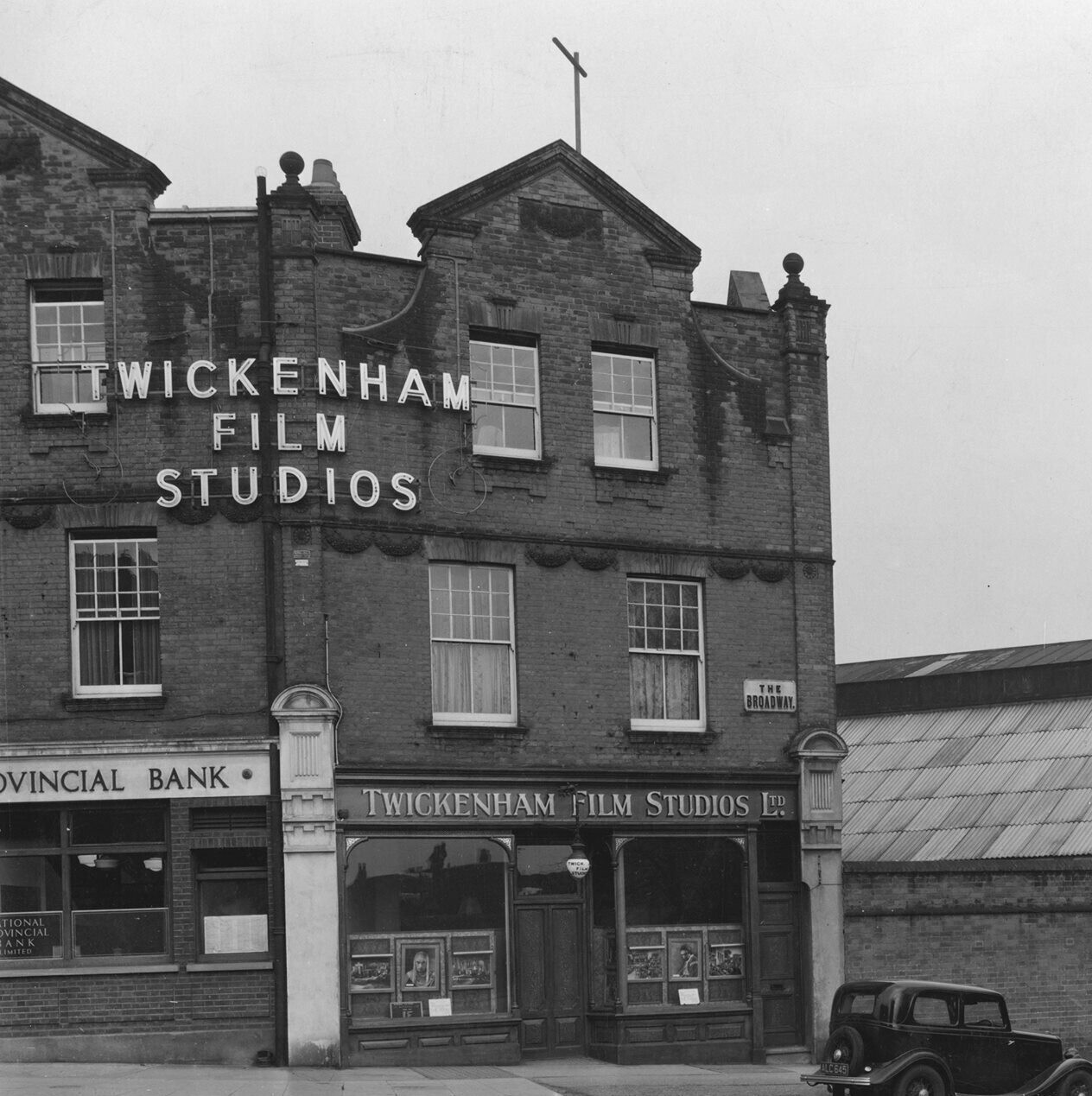 The events of this session were brought up during a straightforward conversation at Twickenham Film Studios on January 13th, 1969, during the filming of what became the "Let It Be" project, this being captured by a microphone placed in a flower pot in the studio's canteen by director Michael Lindsay-Hogg three days after George Harrison announced that he quit The Beatles. John candidly stated, "Now the only regret about the past numbers is when, because I've been so frightened, I've allowed you to take it somewhere I didn't want, and then that my only chance was to let George take over, or interest George in it, because I knew he'd..." Paul recollected, "She Said She Said?", John affirming, "She Said She Said." The events of this session were brought up during a straightforward conversation at Twickenham Film Studios on January 13th, 1969, during the filming of what became the "Let It Be" project, this being captured by a microphone placed in a flower pot in the studio's canteen by director Michael Lindsay-Hogg three days after George Harrison announced that he quit The Beatles. John candidly stated, "Now the only regret about the past numbers is when, because I've been so frightened, I've allowed you to take it somewhere I didn't want, and then that my only chance was to let George take over, or interest George in it, because I knew he'd..." Paul recollected, "She Said She Said?", John affirming, "She Said She Said."
 Following the outburst between John and Paul after the rhythm track of "She Said She Said" was completed, "take three" was deemed the best, thus resulting in the three remaining Beatles performing overdubs to complete the song that night. Onto track three of the tape was recorded John's lead vocals with George filling in for Paul on harmony vocals, this same configuration being double-tracked onto track four. With the four tracks of the four-track tape now filled, a redution mix was made (named "take four") that combined John and George's vocals from tracks three and four of the previous tape to track three of the new tape, track four now becoming available. Onto the now vacant track four was recorded George playing a guitar passage during the bridge (beginning on the lyric "when I was a boy"), John playing a single note on Hammond organ that would be faded up and down during the mix with some additional bass notes filling out the song in Paul's absence, as well as a shaker from Ringo. Following the outburst between John and Paul after the rhythm track of "She Said She Said" was completed, "take three" was deemed the best, thus resulting in the three remaining Beatles performing overdubs to complete the song that night. Onto track three of the tape was recorded John's lead vocals with George filling in for Paul on harmony vocals, this same configuration being double-tracked onto track four. With the four tracks of the four-track tape now filled, a redution mix was made (named "take four") that combined John and George's vocals from tracks three and four of the previous tape to track three of the new tape, track four now becoming available. Onto the now vacant track four was recorded George playing a guitar passage during the bridge (beginning on the lyric "when I was a boy"), John playing a single note on Hammond organ that would be faded up and down during the mix with some additional bass notes filling out the song in Paul's absence, as well as a shaker from Ringo.
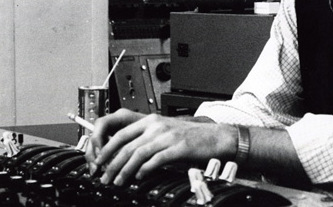 The EMI staff did indeed create three mono mixes of the song early this morning, but none of these were viewed as suitable for the album. The records show, however, that these mixes bore the name of the song as “She Said She Said,” indicating that at some point during this day, a title for the song was decided upon. By 3:45 am the following morning, however, the session was finally over with only final mixing work to be done. The EMI staff did indeed create three mono mixes of the song early this morning, but none of these were viewed as suitable for the album. The records show, however, that these mixes bore the name of the song as “She Said She Said,” indicating that at some point during this day, a title for the song was decided upon. By 3:45 am the following morning, however, the session was finally over with only final mixing work to be done.
 The final round of mixing for the album occurred the following evening, June 22nd, 1966, in the control room of EMI Studio Three. These mixes were created by the same team of George Martin and Geoff Emerick, the 2nd engineer on this session being Jerry Boys. The mono mix of “She Said She Said” was made first, the stereo mix putting the drums and bass (track one) fully on the left channel while all of the guitars (track two) as well as the organ (track four) are primarily on the right channel, conventional stereo mixes being in their primitive stage at this point. The vocals (track three) are centered in the mix. The final round of mixing for the album occurred the following evening, June 22nd, 1966, in the control room of EMI Studio Three. These mixes were created by the same team of George Martin and Geoff Emerick, the 2nd engineer on this session being Jerry Boys. The mono mix of “She Said She Said” was made first, the stereo mix putting the drums and bass (track one) fully on the left channel while all of the guitars (track two) as well as the organ (track four) are primarily on the right channel, conventional stereo mixes being in their primitive stage at this point. The vocals (track three) are centered in the mix.
On January 8th, 1969, the band ran through "She Said She Said" at Twickenham Film Studios during their rehearsals for what became the "Let It Be" album and film. This version, of course, never got officially released.
 Sometime in 2022, George Martin's son Giles Martin, along with engineer Sam Okell, returned to the "She Said She Said" tapes to create a new stereo mix using AI technology to seperate the tracks for a more enjoyable listening experence. Some elements of this new mix, however, such as the decrease in compression used on Ringo's cymbals and the lowered volume of George's guitar overdub, resulted in this new mix being viewed by many as inferior to the original stereo mix that appears raw and uninhibited as intended. While they were at it, this production team also created a mix of John's second home demo of the song (detailed above) as well as "take 15" with introductory banter from "take two" added in, all of these being included in the 2022 Deluxe editions of "Revolver." Sometime in 2022, George Martin's son Giles Martin, along with engineer Sam Okell, returned to the "She Said She Said" tapes to create a new stereo mix using AI technology to seperate the tracks for a more enjoyable listening experence. Some elements of this new mix, however, such as the decrease in compression used on Ringo's cymbals and the lowered volume of George's guitar overdub, resulted in this new mix being viewed by many as inferior to the original stereo mix that appears raw and uninhibited as intended. While they were at it, this production team also created a mix of John's second home demo of the song (detailed above) as well as "take 15" with introductory banter from "take two" added in, all of these being included in the 2022 Deluxe editions of "Revolver."
Song Structure and Style
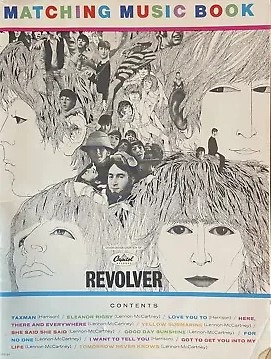 A typical format of ‘verse/ verse/ bridge/ verse/ bridge/ verse’ (or aababa) is utilized here but with a quick introduction and faded ending, no instrumental or solo section required. That having been said, just about everything else having to do with the structure and style of “She Said She Said” is anything but typical. A typical format of ‘verse/ verse/ bridge/ verse/ bridge/ verse’ (or aababa) is utilized here but with a quick introduction and faded ending, no instrumental or solo section required. That having been said, just about everything else having to do with the structure and style of “She Said She Said” is anything but typical.
“I have a sort of strange rhythm sense,” John explained in a 1968 Rolling Stone interview, “because I’ve never been able to keep rhythm on the stage. I always used to get lost – It’s me double off-beats.” This rhythm issue has never been more apparent up to this point than on “She Said She Said,” where his rambling rhythms are somewhat difficult for the listener to decipher, let alone the group themselves. This undoubtedly is why it took some 25 rehearsal takes in the recording studio before they were ready to record.
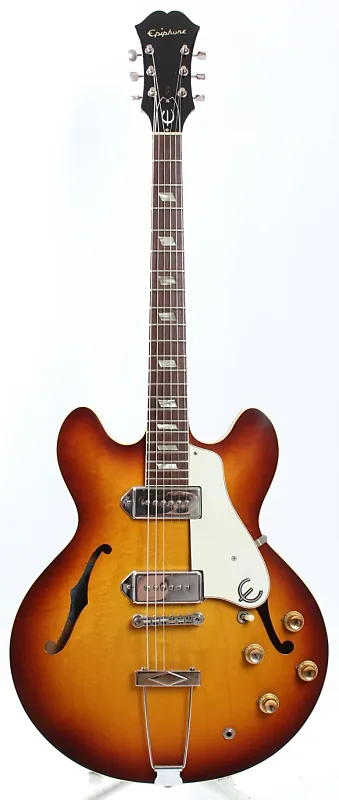 The three-measure introduction begins with a solo voicing of a distorted lead guitar line that follows an eighth note rising stair-step pattern as heard various times vocally throughout the song. This encompasses the first measure, the downbeat of the second measure bringing in the entire instrumentation with a crash, signaling the heavy-energy of the song from this moment on. The tumbling drum fill from Ringo in the third measure is a harbinger of impressive drum work to come in the next two-and-a-half minutes. The three-measure introduction begins with a solo voicing of a distorted lead guitar line that follows an eighth note rising stair-step pattern as heard various times vocally throughout the song. This encompasses the first measure, the downbeat of the second measure bringing in the entire instrumentation with a crash, signaling the heavy-energy of the song from this moment on. The tumbling drum fill from Ringo in the third measure is a harbinger of impressive drum work to come in the next two-and-a-half minutes.
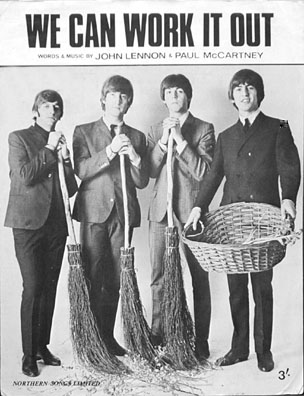 The first verse, like all of them, is ten measures long and begins on the downbeat with an octave vocal jump from John on the words “she saaaaaid.” Ringo steers away from keeping the beat on a ride cymbal or hi-hat, focusing on the kick drum and snare until an expressive drum fill appears, which it does in the second measure, culminating in a cymbal crash at the beginning of the third measure. Harmony vocals also appear in the second measure on the lyrics “I know what it’s like to be dead,” the final four words being sung in triplet form on top of straight 4/4 timing. Similar triplet singing has occurred before in The Beatles catalog, the “fussing and fighting” lines in “We Can Work It Out” being a prime example. Another expressive feature of the verse is George’s guitar lines that capture the essence of the vocal line just sung, thus filling in the gaps between the vocal phrases. The first verse, like all of them, is ten measures long and begins on the downbeat with an octave vocal jump from John on the words “she saaaaaid.” Ringo steers away from keeping the beat on a ride cymbal or hi-hat, focusing on the kick drum and snare until an expressive drum fill appears, which it does in the second measure, culminating in a cymbal crash at the beginning of the third measure. Harmony vocals also appear in the second measure on the lyrics “I know what it’s like to be dead,” the final four words being sung in triplet form on top of straight 4/4 timing. Similar triplet singing has occurred before in The Beatles catalog, the “fussing and fighting” lines in “We Can Work It Out” being a prime example. Another expressive feature of the verse is George’s guitar lines that capture the essence of the vocal line just sung, thus filling in the gaps between the vocal phrases.
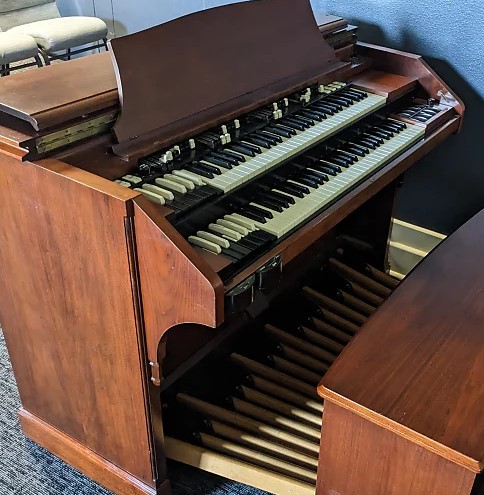 Ringo then continues the "drum fill / cymbal crash" pattern in the fourth and sixth measures, setting a precedent of performing this pattern in the even-numbered measures of the verses. Also, slightly noticeable throughout the verse, are the high notes of a Hammond organ (overdubbed by John) which could be easily mistaken for guitar feedback. This sound keeps surfacing and disappearing throughout the verse, especially apparent in the final four measures. The harmony triplet singing comes up again in the fifth measure on the words “is to be sad.” Ringo then continues the "drum fill / cymbal crash" pattern in the fourth and sixth measures, setting a precedent of performing this pattern in the even-numbered measures of the verses. Also, slightly noticeable throughout the verse, are the high notes of a Hammond organ (overdubbed by John) which could be easily mistaken for guitar feedback. This sound keeps surfacing and disappearing throughout the verse, especially apparent in the final four measures. The harmony triplet singing comes up again in the fifth measure on the words “is to be sad.”
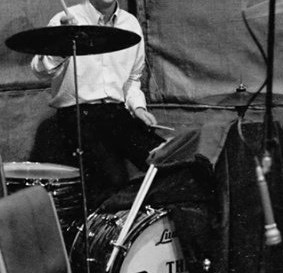 These final four measures accentuate the pay-off vocal line “and she’s making me feel like I’ve never been born,” which is sung solo amid syncopated power chords, piercing drum fills and cymbal crashes. The standard eight-measure format is extended another two measures by repeating the last two bars instrumentally, George’s lead guitar voicing the lyric this time around. The power chord backdrop allows this melody line to permeate our consciousness and leave the intended lasting impression. These final four measures accentuate the pay-off vocal line “and she’s making me feel like I’ve never been born,” which is sung solo amid syncopated power chords, piercing drum fills and cymbal crashes. The standard eight-measure format is extended another two measures by repeating the last two bars instrumentally, George’s lead guitar voicing the lyric this time around. The power chord backdrop allows this melody line to permeate our consciousness and leave the intended lasting impression.
 After another drum fill from Ringo, an additional ten-measure verse then begins which follows the same basic pattern as the first. The Hammond organ high notes are especially noticeable throughout this verse, although they seem to disappear from view thereafter for the remainder of the song. After another drum fill from Ringo, an additional ten-measure verse then begins which follows the same basic pattern as the first. The Hammond organ high notes are especially noticeable throughout this verse, although they seem to disappear from view thereafter for the remainder of the song.
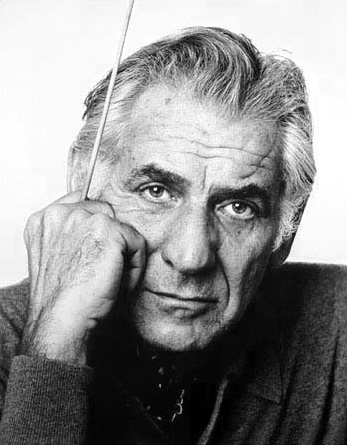 Next comes the bridge, and this is where the arrangement gets sticky! The verses were all in 4/4 time, but John’s “strange rhythm sense” rears its head for the first time, leaving most listeners a little bewildered but satisfied. Although experts are in disagreement here, it appears that the bridge is eleven measures long and then changes from 4/4 time in the first two measures into 3/4 time for the remaining nine measures. As distinguished composer and conductor Leonard Bernstein stated on the 1967 TV show "Inside Pop: The Rock Revolution," "It goes nicely along 4/4, then there's a sneaky switch to three-quarter time for a whole passage (until) we're back again safely in the old 4-beat. Such oddities as this are not just tricks or show-off devices. In terms of pop music's basic English, so to speak, they are real inventions...(a) remarkable song." Next comes the bridge, and this is where the arrangement gets sticky! The verses were all in 4/4 time, but John’s “strange rhythm sense” rears its head for the first time, leaving most listeners a little bewildered but satisfied. Although experts are in disagreement here, it appears that the bridge is eleven measures long and then changes from 4/4 time in the first two measures into 3/4 time for the remaining nine measures. As distinguished composer and conductor Leonard Bernstein stated on the 1967 TV show "Inside Pop: The Rock Revolution," "It goes nicely along 4/4, then there's a sneaky switch to three-quarter time for a whole passage (until) we're back again safely in the old 4-beat. Such oddities as this are not just tricks or show-off devices. In terms of pop music's basic English, so to speak, they are real inventions...(a) remarkable song."
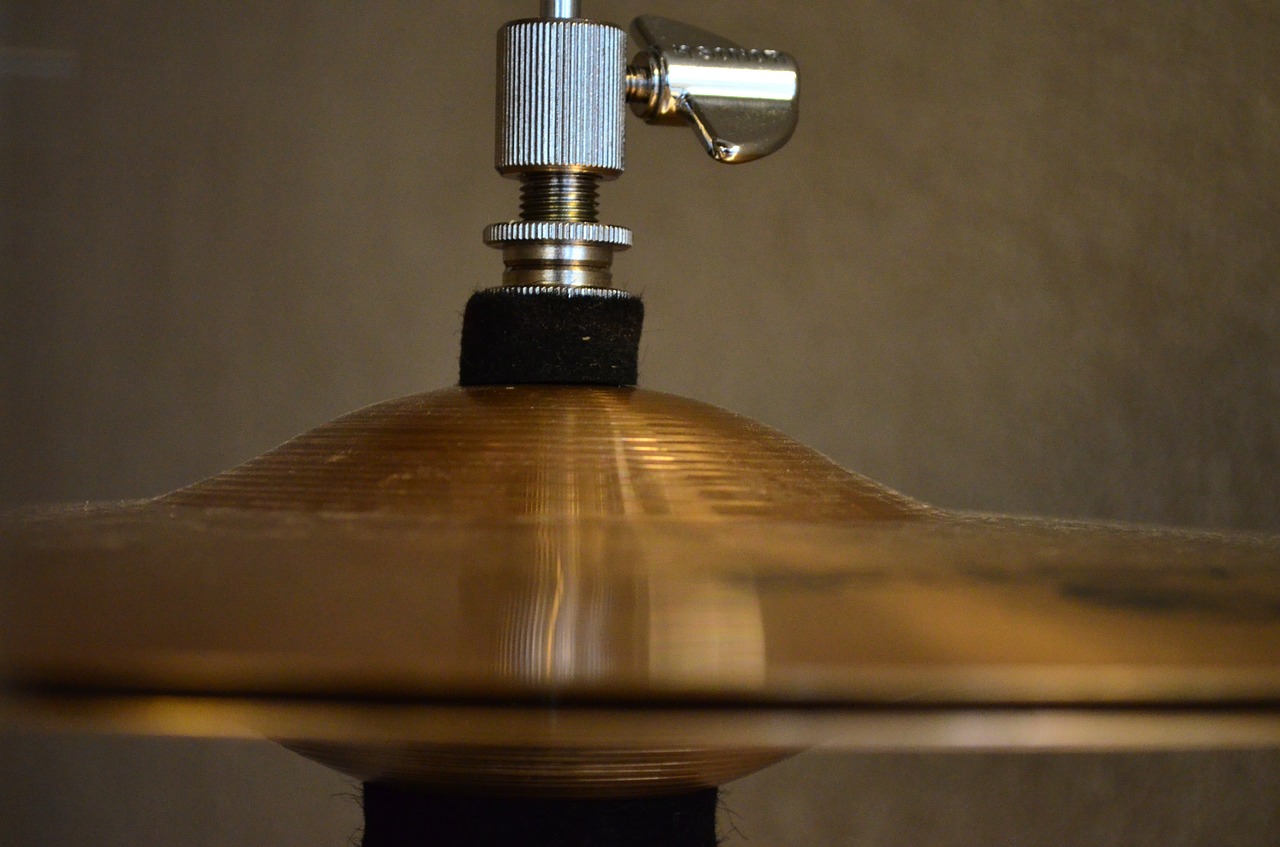 Most of the bridge is vocalized in harmony, the only exceptions being the first “she said” and the words “when I was a boy” in the fourth measure. Ringo keeps to the snare and kick drum throughout the first four measures, beating out a 4/4 rhythm even after the meter changes to 3/4 in the third measure. When the word “boy” signals the fifth measure, Ringo begins riding on the hi-hat for the first time in the song while accenting eighth notes in a march-like rhythm for the remainder of the bridge. The word “boy” also signals George to begin a well-rehearsed lead guitar passage that follows the chord changes perfectly, although it does appear a little rushed in the sixth measure. Most of the bridge is vocalized in harmony, the only exceptions being the first “she said” and the words “when I was a boy” in the fourth measure. Ringo keeps to the snare and kick drum throughout the first four measures, beating out a 4/4 rhythm even after the meter changes to 3/4 in the third measure. When the word “boy” signals the fifth measure, Ringo begins riding on the hi-hat for the first time in the song while accenting eighth notes in a march-like rhythm for the remainder of the bridge. The word “boy” also signals George to begin a well-rehearsed lead guitar passage that follows the chord changes perfectly, although it does appear a little rushed in the sixth measure.
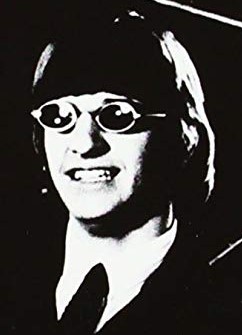 This transitions abruptly back into 4/4 time as a third verse immediately appears, the format nearly identical to the first two. The difference here being that Ringo performs his "drum fill / cymbal crash" in the opening measure instead of the second measure, remembering the even-numbered pattern thereafter and resuming it in the fourth and sixth measure to round out the third verse nicely. This transitions abruptly back into 4/4 time as a third verse immediately appears, the format nearly identical to the first two. The difference here being that Ringo performs his "drum fill / cymbal crash" in the opening measure instead of the second measure, remembering the even-numbered pattern thereafter and resuming it in the fourth and sixth measure to round out the third verse nicely.
A repeat of the bridge is next, which is also identical structurally. Ringo comes in a full measure early with his march-like eighth notes, beginning in the fourth measure with the lyrics “wrong, when I was a.” George repeats his lead guitar passage from the first bridge and gets it a little more in tempo with the beat this time around.
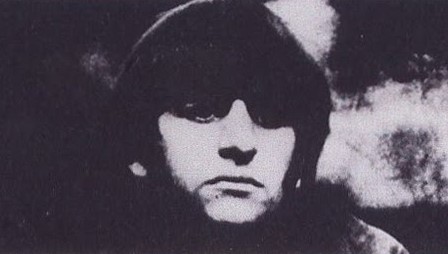 A repeat of the third verse is next played, Ringo still coming in on the first measure instead of the second with his "drum fill / cymbal crash." However, this time, Ringo continues the opposite pattern, playing this feature on the odd-numbered measures instead of the even, finally compensating by performing it in the fifth and sixth measures consecutively. A repeat of the third verse is next played, Ringo still coming in on the first measure instead of the second with his "drum fill / cymbal crash." However, this time, Ringo continues the opposite pattern, playing this feature on the odd-numbered measures instead of the even, finally compensating by performing it in the fifth and sixth measures consecutively.
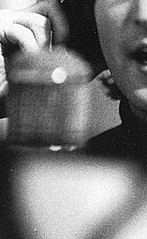 The conclusion then appears which sounds for all intents and purposes like a repeat of the first verse. However, Ringo decides to flail away at his highly compressed cymbals right from the get-go, then going into double-time from the third measure on until the song fades into the distance. Also, in a ‘row-row-row-your-boat’ fashion, John repeats every vocal phrase in the gaps of his lead vocal as an overdub, resulting as “I know what it’s like to be – I know what it’s like to be – I know what it is to be…” All in all, a very impressive finishing touch to side one of an amazing album. The conclusion then appears which sounds for all intents and purposes like a repeat of the first verse. However, Ringo decides to flail away at his highly compressed cymbals right from the get-go, then going into double-time from the third measure on until the song fades into the distance. Also, in a ‘row-row-row-your-boat’ fashion, John repeats every vocal phrase in the gaps of his lead vocal as an overdub, resulting as “I know what it’s like to be – I know what it’s like to be – I know what it is to be…” All in all, a very impressive finishing touch to side one of an amazing album.
 John takes the reins on this song, implementing his odd time signatures and detailed arrangement exactly how he conjured it in his mind. His confident vocal work gives the impression he means every word of what he says, whether you understand it or not. His finger-picking rhythm guitar playing does well in making the arrangement sound big, while his harmony vocals are slurred perfectly into pitch. While the Hammond organ details aren’t intrinsic to the overall sound, they are exactly what he wanted…enough said. John takes the reins on this song, implementing his odd time signatures and detailed arrangement exactly how he conjured it in his mind. His confident vocal work gives the impression he means every word of what he says, whether you understand it or not. His finger-picking rhythm guitar playing does well in making the arrangement sound big, while his harmony vocals are slurred perfectly into pitch. While the Hammond organ details aren’t intrinsic to the overall sound, they are exactly what he wanted…enough said.
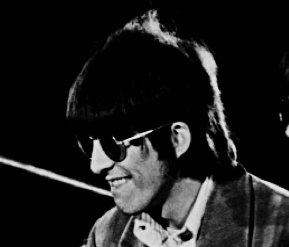 George Harrison plays a very impressive supporting role, suggesting what he would have been more than capable of with less dissention in the studio. His lead guitar work is an essential ingredient to the whole and is arranged and performed with great aplomb. It also becomes apparent that he’s just as much of a natural at singing spot-on harmony as Paul is. George Harrison plays a very impressive supporting role, suggesting what he would have been more than capable of with less dissention in the studio. His lead guitar work is an essential ingredient to the whole and is arranged and performed with great aplomb. It also becomes apparent that he’s just as much of a natural at singing spot-on harmony as Paul is.
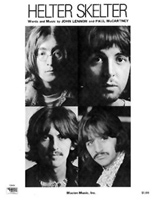 Many writers point to this recording as Ringo’s best work behind the drum kit, and understandably so. He may have gone on record as saying he didn’t like performing drum solos, but this could easily be considered the next best thing. His four-piece Ludwig set must have been smoking after the near nine hours that it took to get this recording completed. I wouldn’t doubt that he may have shouted a “blisters on my fingers” remark two years earlier than his famous one! While Paul was involved, his bass work in the rhythm tack is performed simply but adequately. Many writers point to this recording as Ringo’s best work behind the drum kit, and understandably so. He may have gone on record as saying he didn’t like performing drum solos, but this could easily be considered the next best thing. His four-piece Ludwig set must have been smoking after the near nine hours that it took to get this recording completed. I wouldn’t doubt that he may have shouted a “blisters on my fingers” remark two years earlier than his famous one! While Paul was involved, his bass work in the rhythm tack is performed simply but adequately.
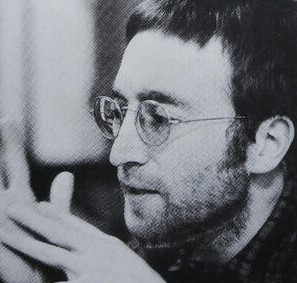 While the genesis of the lyrics are explained above, changing the personal exchange from a “he” to a “she” paints a somewhat different picture for the average listener who isn’t in the know. Adding the phrase “I know what it is to be sad” to her interchange with John gives a somewhat sympathetic view to the woman. However, John is undaunted and expresses nothing but irritation at her view, saying “you’re making me feel like I’ve never been born” and “I know that I’m ready to leave.” John’s reply, “Who put all those things in your head?” is followed by the revealing “things that make me feel that I’m mad,” that is, crazy. While the genesis of the lyrics are explained above, changing the personal exchange from a “he” to a “she” paints a somewhat different picture for the average listener who isn’t in the know. Adding the phrase “I know what it is to be sad” to her interchange with John gives a somewhat sympathetic view to the woman. However, John is undaunted and expresses nothing but irritation at her view, saying “you’re making me feel like I’ve never been born” and “I know that I’m ready to leave.” John’s reply, “Who put all those things in your head?” is followed by the revealing “things that make me feel that I’m mad,” that is, crazy.
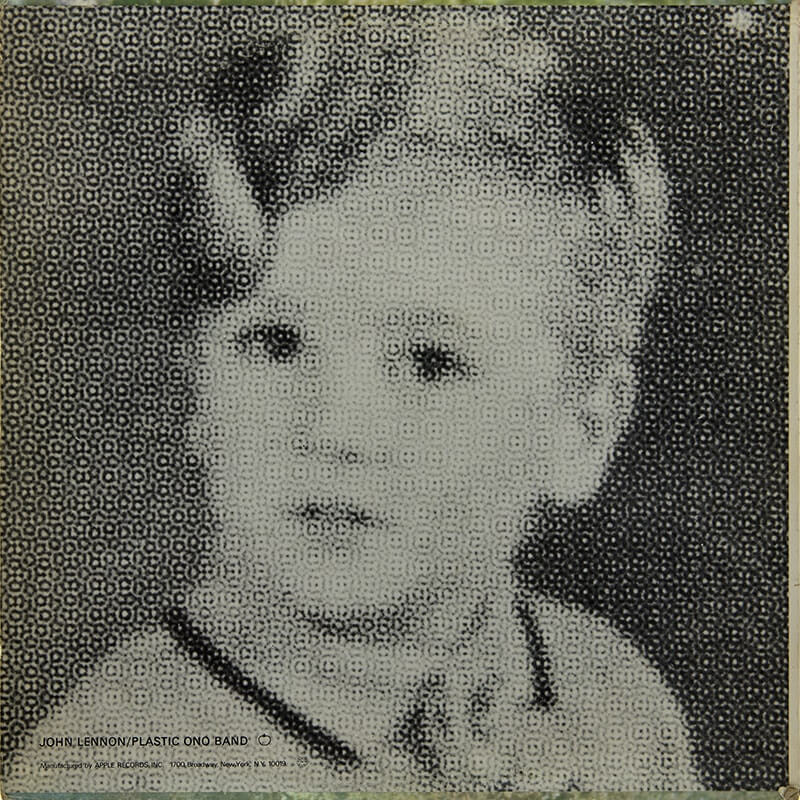 His paranoia is then combined with his remembrance of a simpler life. When she tries to explain, he quickly interjects, “no, no, no, you’re wrong” and then states, “When I was a boy, everything was right.” The innocence of his childhood is expressed in comparison to his drug-induced state of mind at the time. As stated above, John himself related this in interview: “It was just an ‘acidy song, I suppose, ‘When I was a little boy,’ you see. A lot of early childhood was coming out, anyway.” His paranoia is then combined with his remembrance of a simpler life. When she tries to explain, he quickly interjects, “no, no, no, you’re wrong” and then states, “When I was a boy, everything was right.” The innocence of his childhood is expressed in comparison to his drug-induced state of mind at the time. As stated above, John himself related this in interview: “It was just an ‘acidy song, I suppose, ‘When I was a little boy,’ you see. A lot of early childhood was coming out, anyway.”
 British promotional advertisement for "Revolver"
|
American Releases
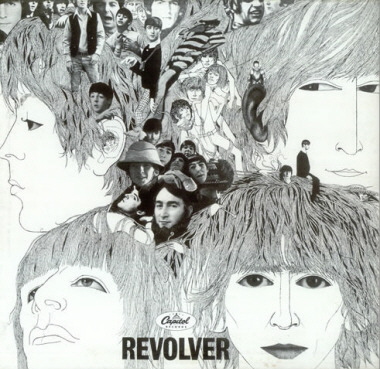 August 8th, 1966 was the American release date of the Capitol eleven-track version of the album “Revolver.” With three of the other Lennon vocal songs from the album lopped off for inclusion on the previously released “Yesterday…And Today” album, “Revolver” appeared very McCartney dominated. The final song on each side featured a Lennon lead vocal, side one ending with “She Said She Said” and side two ending with “Tomorrow Never Knows.” This American version of the "Revolver" album got a compact disc release on January 21st, 2014, with both the mono and stereo versions contained on a single CD. August 8th, 1966 was the American release date of the Capitol eleven-track version of the album “Revolver.” With three of the other Lennon vocal songs from the album lopped off for inclusion on the previously released “Yesterday…And Today” album, “Revolver” appeared very McCartney dominated. The final song on each side featured a Lennon lead vocal, side one ending with “She Said She Said” and side two ending with “Tomorrow Never Knows.” This American version of the "Revolver" album got a compact disc release on January 21st, 2014, with both the mono and stereo versions contained on a single CD.
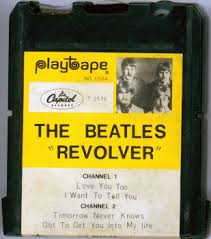 Sometime in 1967, Capitol released Beatles music on a brand new but short-lived format called "Playtapes." These tape cartridges did not have the capability to include entire albums, so two truncated four-song versions of "Revolver" were released in this portable format, "She Said She Said" being on one of them. These "Playtapes" are highly collectable today. Sometime in 1967, Capitol released Beatles music on a brand new but short-lived format called "Playtapes." These tape cartridges did not have the capability to include entire albums, so two truncated four-song versions of "Revolver" were released in this portable format, "She Said She Said" being on one of them. These "Playtapes" are highly collectable today.
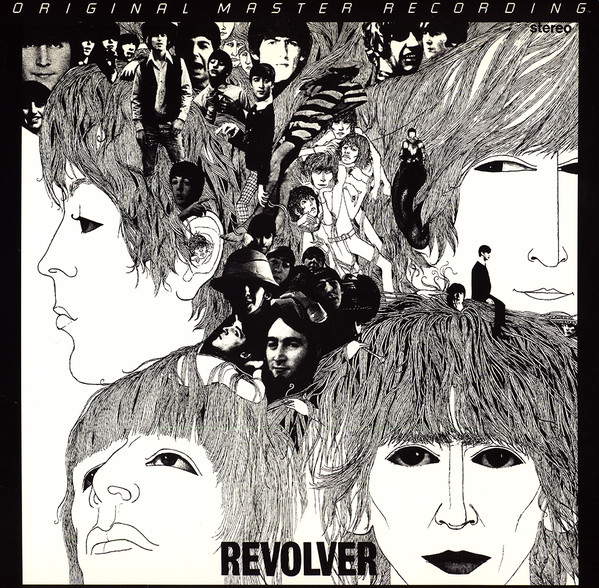 The first time the original British "Revolver” album was made available in the US was the "Original Master Recording" vinyl edition released through Mobile Fidelity Sound Lab sometime in 1985. This LP included "She Said She Said" and was prepared utilizing half-speed mastering technology from the original master tape on loan from EMI. This version of the album was only available for a short time and is quite collectible today. The first time the original British "Revolver” album was made available in the US was the "Original Master Recording" vinyl edition released through Mobile Fidelity Sound Lab sometime in 1985. This LP included "She Said She Said" and was prepared utilizing half-speed mastering technology from the original master tape on loan from EMI. This version of the album was only available for a short time and is quite collectible today.
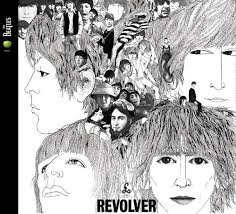 It was on April 30th, 1987 that the first compact disc of “Revolver” was released in America, the vinyl edition coming out on July 21st, 1987. The LP was then remastered and re-released on CD on September 9th, 2009 and on vinyl on November 13th, 2012. A newly mixed edition of "Revolver" created by Giles Martin was released on vinyl and CD on October 28th, 2022. It was on April 30th, 1987 that the first compact disc of “Revolver” was released in America, the vinyl edition coming out on July 21st, 1987. The LP was then remastered and re-released on CD on September 9th, 2009 and on vinyl on November 13th, 2012. A newly mixed edition of "Revolver" created by Giles Martin was released on vinyl and CD on October 28th, 2022.
Also released on September 9th, 2009 was the CD box set “The Beatles In Mono,” which featured the original mono mix of “She Said She Said” as originally available on the mono albums of 1966. The vinyl edition of this box set was first released on September 9th, 2014.
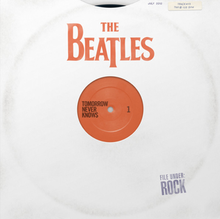 Later, on July 24th, 2012, the iTunes Store, in partnership with EMI Records, released a Beatles compilation album entitled "Tomorrow Never Knows," the purpose of which was to highlight the group's influence on the history of rock music. The album had the approval of Paul and Ringo, as well as the board of directors for the estates of John and George, and was successful enough to peak at #24 on the Billboard album chart. "She Said She Said" fits in perfectly on this release. Later, on July 24th, 2012, the iTunes Store, in partnership with EMI Records, released a Beatles compilation album entitled "Tomorrow Never Knows," the purpose of which was to highlight the group's influence on the history of rock music. The album had the approval of Paul and Ringo, as well as the board of directors for the estates of John and George, and was successful enough to peak at #24 on the Billboard album chart. "She Said She Said" fits in perfectly on this release.
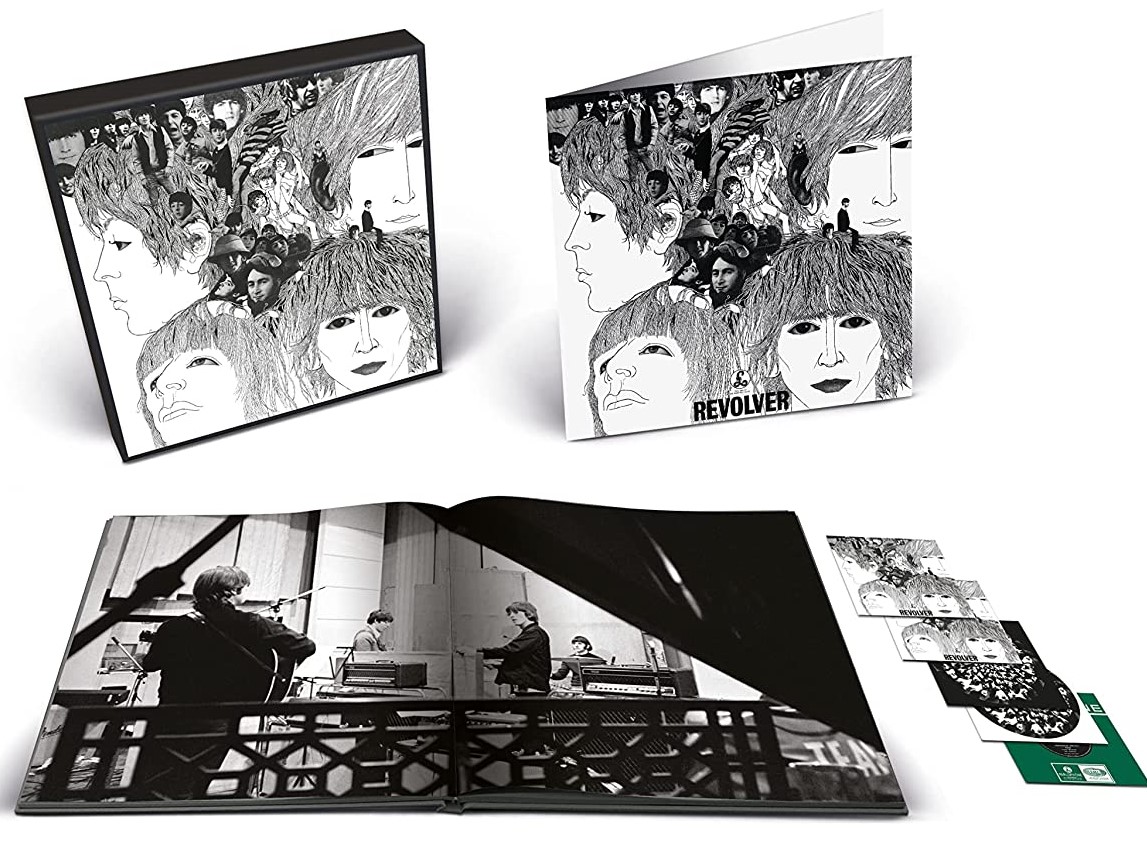 On October 28th, 2022, various new editions of the 14 track “Revolver” album were released that feature the amazing new stereo mix by Giles Martin. The “Special Edition Deluxe 2CD Set” features “She Said She Said” in its new stereo mix as well as “take 15 - Backing track rehearsal" from the 1966 session tapes. The “Deluxe Edition,” which is available as a 5 CD box set and a 4LP / 1 EP box set, includes these versions as well as John's second home demo of the song and the original mono master from 1966. The 2022 Giles Martin stereo mix of the album was also made available for the first time as a vinyl picture disc for a limited time. On October 28th, 2022, various new editions of the 14 track “Revolver” album were released that feature the amazing new stereo mix by Giles Martin. The “Special Edition Deluxe 2CD Set” features “She Said She Said” in its new stereo mix as well as “take 15 - Backing track rehearsal" from the 1966 session tapes. The “Deluxe Edition,” which is available as a 5 CD box set and a 4LP / 1 EP box set, includes these versions as well as John's second home demo of the song and the original mono master from 1966. The 2022 Giles Martin stereo mix of the album was also made available for the first time as a vinyl picture disc for a limited time.
Live Performances
Although they could have worked up a convincing live version of the song, The Beatles never took the time, opting instead to continue the same set list they used on their brief international tour as they went out on their final US tour of 1966.
Conclusion
 Although John Lennon’s compositions have touched on eccentricities before this point – that is to say, deviations from the standard rules of pop music of the time – “She Said She Said” reveals that his melodic structures were starting to be more expressive and “by feel” that most established norms. A change in time signature within a song was very new to Beatles compositions, although this ground was broken with the bridge in “We Can Work It Out” the year before (not to mention their early cover song “A Taste Of Honey” which also changes time signature). With all of the idiosyncrasies of “She Said She Said,” however, The Beatles pull it off very convincingly, winning the admiration of critics and fans alike. Although John Lennon’s compositions have touched on eccentricities before this point – that is to say, deviations from the standard rules of pop music of the time – “She Said She Said” reveals that his melodic structures were starting to be more expressive and “by feel” that most established norms. A change in time signature within a song was very new to Beatles compositions, although this ground was broken with the bridge in “We Can Work It Out” the year before (not to mention their early cover song “A Taste Of Honey” which also changes time signature). With all of the idiosyncrasies of “She Said She Said,” however, The Beatles pull it off very convincingly, winning the admiration of critics and fans alike.
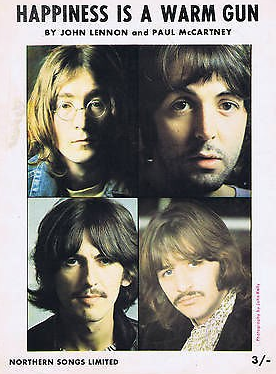 If the adventurous bent of “She Said She Said” shows their maturity in songwriting, wait until the next few years. Lennon’s “The Continuing Story Of Bungalow Bill,” “Happiness Is A Warm Gun” and “I Want You (She’s So Heavy)” were surely testing the limits, while “Revolution 9” throws all pop conformity out of the window. If the world was expecting them to keep composing sing-a-long “She Loves You” standards, they needed to hold on to their hats! If the adventurous bent of “She Said She Said” shows their maturity in songwriting, wait until the next few years. Lennon’s “The Continuing Story Of Bungalow Bill,” “Happiness Is A Warm Gun” and “I Want You (She’s So Heavy)” were surely testing the limits, while “Revolution 9” throws all pop conformity out of the window. If the world was expecting them to keep composing sing-a-long “She Loves You” standards, they needed to hold on to their hats!
“She Said She Said”
Written by: John Lennon / Paul McCartney
-
Song Written: August, 1965 – June, 1966
-
Song Recorded: June 21, 1966
-
First US Release Date: August 8, 1966
-
First US Album Release: Capitol #ST-2576 “Revolver”
-
US Single Release: n/a
-
Highest Chart Position: n/a
-
British Album Release: Parlophone #PCS 7009 “Revolver”
-
Length: 2:39
-
Key: B flat
-
Producer: George Martin
-
Engineers: Geoff Emerick, Phil McDonald
Instrumentation (most likely):
-
John Lennon - Lead and Harmony Vocals, Rhythm Guitars (1965 Epiphone E230TD Casino), Organ (Hammond RT-3)
-
George Harrison – Lead Guitar (1964 Gibson SG Standard), Harmony Vocals
- Ringo Starr – Drums (1964 Ludwig Super Classic Black Oyster Pearl), shaker
- Paul McCartney - Bass Guitar (1964 Rickenbacker 4001S)
Written and compiled by Dave Rybaczewski
|
IF YOU WOULD LIKE TO MAKE A DONATION TO KEEP THIS WEBSITE UP AND RUNNING, PLEASE CLICK BELOW!
Sign Up Below for our MONTHLY BEATLES TRIVIA QUIZ!
|